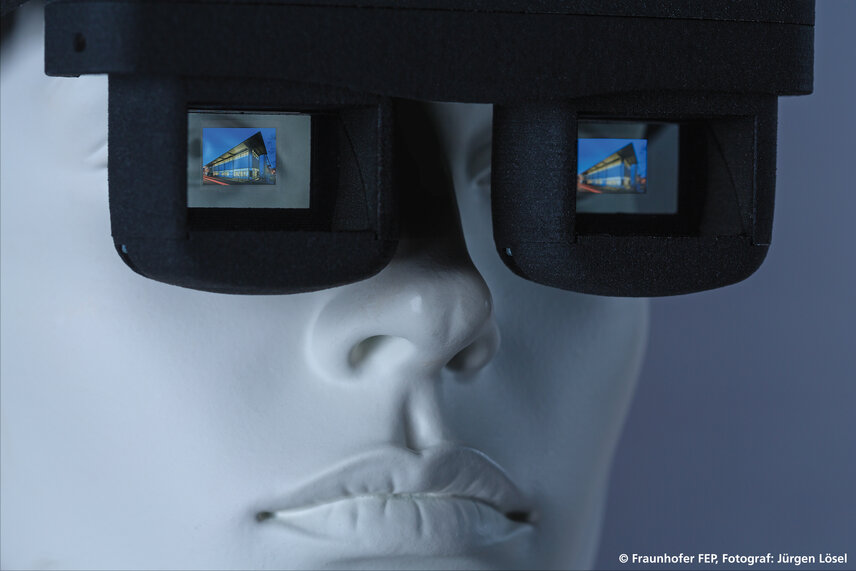The Fraunhofer Institute for Organic Electronics, Electron Beam and Plasma Technology FEP has been developing various applications for OLED microdisplays based on organic semiconductors. By integrating the capabilities of an image sensor directly into the microdisplay, eye movements can be recorded by the smart glasses and utilized for guidance and control functions, as one example.
“Augmented-reality” and “wearables” can make daily life a little simpler and provide valuable assistance for patients, athletes, and in manufacturing. With the help of the so-called bi-directional OLED microdisplays, which are developed by Fraunhofer FEP, the function of “wearable displays” and hands-free eye controlled systems are joined together in a unique way. “Eye-controlled augmented-reality smart glasses using our OLED microdisplays can be designed to be relatively small and light-weight since the display and image sensor are integrated on a single chip. A new and improved development platform is now available to our clients for creating proprietary products”, explains Judith Baumgarten, Project Manager at Fraunhofer FEP.
The current generation of color bi-directional microdisplays offers SVGA resolution (800 × 600 × RGBW) and for the first time sufficient image quality to become established in this market segment. The updated hardware design with standard HDMI and USB interfaces likewise contribute to getting established.
The new eyeglasses originated within the FAIR Project, which was completed this year and funded by the German Federal Ministry of Education and Research (BMBF). The project objective was to develop smart glasses for human-machine interaction, with control based on visual information captured and derived from eye movements. The bi-directional full color OLED microdisplays integrated into see-trough data eye-glasses under this joint project were designed by project partner Trivisio, who developed a specialized mechanical design to fit the head in order to achieve good comfort and wearability. The electronics were integrated completely into the glasses so that they can be connected to a PC without an intermediate controller.
Various use-cases were examined and suitable application software for guide-by-eye control were developed. One application developed is a communications and entertainment platform for ALS patients. It converts text segments into audible speech signals, as well as enabling photographs to be selected and displayed, and videos and music to be watched and listened to. Another application was developed for industry. In this case the glasses were used for calibration of pressure regulators in production facilities.
The displays can be acquired in various evaluation kits for industry partners to test out their own ideas. The new product will be debuted at Augmented World Expo Europe (AWE) in Berlin, October 18-19, 2016
Contact: Ines Schedwill, Fraunhofer Institute for Organic Electronics, Electron Beam and Plasma Technology FEP
ines.schedwill@fep.fraunhofer.de
